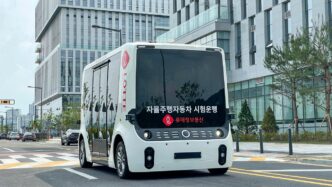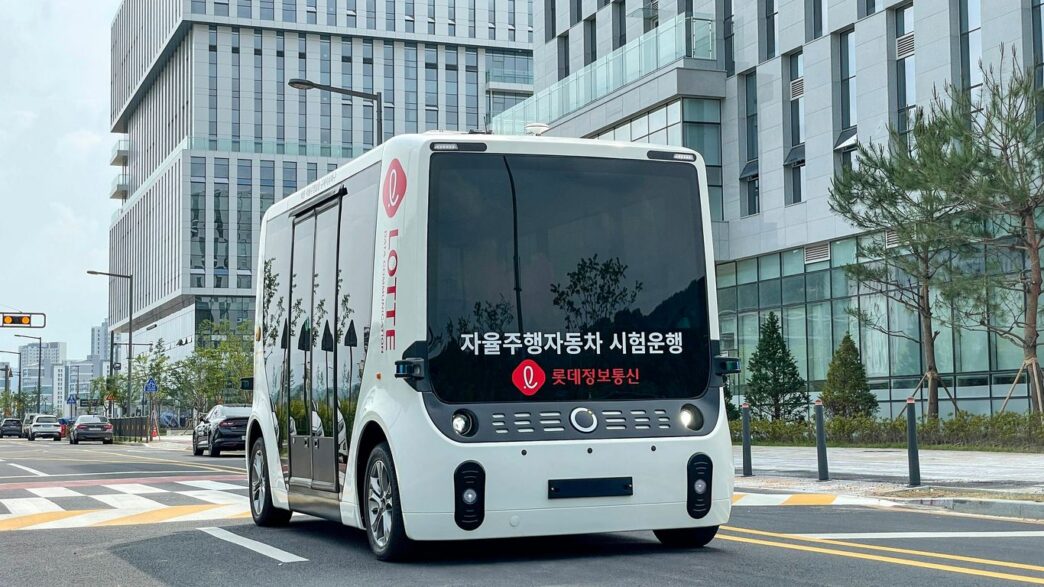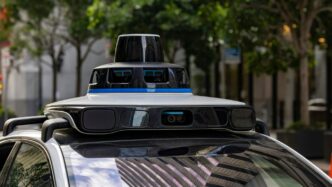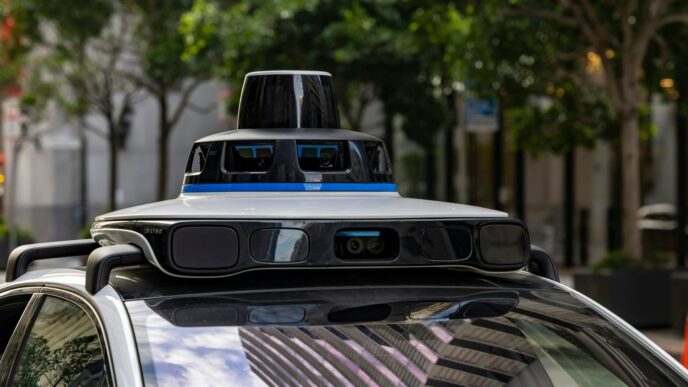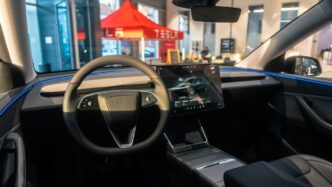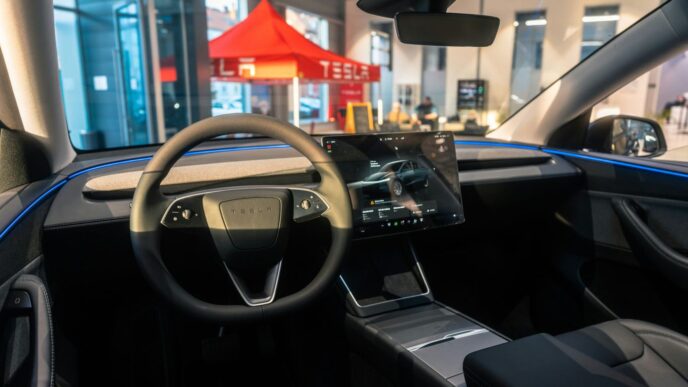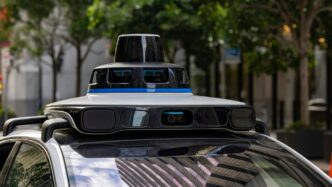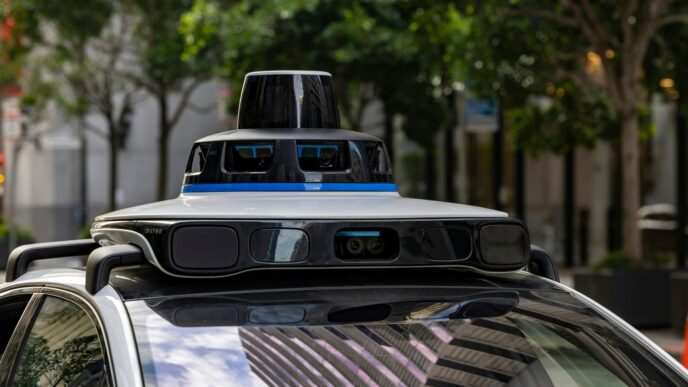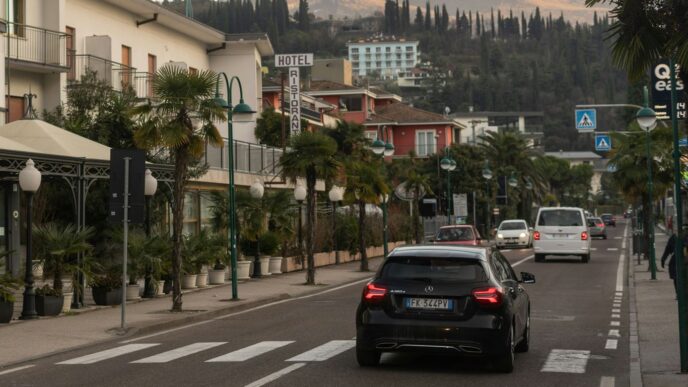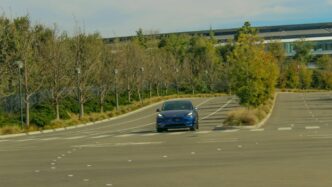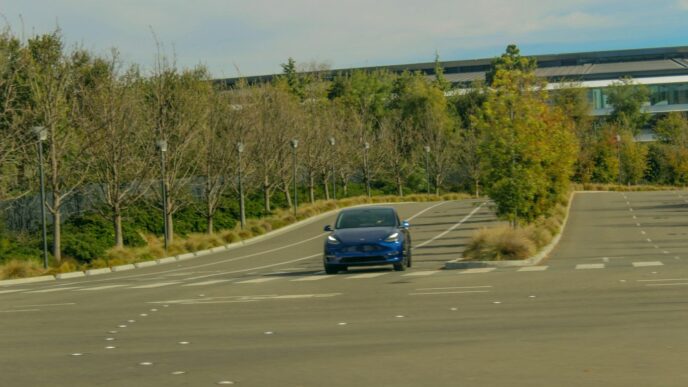The Evolution of Mobileye Cars
It all started back in 1999 when Professor Amnon Shashua founded Mobileye. The initial idea was pretty straightforward: create systems that could help cars see their surroundings better, especially other vehicles. This was the beginning of what we now know as driver-assist technology. From those early days, the goal has always been to make driving safer and easier for everyone, eventually leading to fully self-driving cars.
Pioneering Driver-Assist Technologies
Mobileye’s journey began with a focus on advanced driver-assistance systems, or ADAS. Think of things like blind-spot detection, which gives you a heads-up if something’s lurking where you can’t easily see it. Then there are more advanced features, like automatic emergency braking. This system can spot a potential crash and not only warn you but also slow down or stop the car if you don’t react fast enough. These features are built on the idea of making driving less stressful and, more importantly, much safer.
The Role of the EyeQ Chip
At the heart of all this technology is the EyeQ chip. First introduced in 2004, this special chip is designed specifically for cars. It’s like the brain that processes all the information coming from the car’s cameras. The EyeQ chip runs complex software that can identify things on the road in real-time – other cars, people, road signs, lane markings, and even the shape of the road ahead. This ability to understand the environment is what makes advanced driver-assist features possible.
Milestones in Autonomous Development
Mobileye has hit quite a few important points along the way. Here’s a quick look:
- 2007: The first EyeQ chip was shipped.
- 2012: One million EyeQ chips had been sent out.
- 2015: Mobileye’s tech was in 160 car models from 25 different car makers.
- 2017: Intel bought Mobileye for a hefty $15.3 billion.
- 2021: They started testing self-driving vehicles on three continents.
- 2021: The 100 millionth EyeQ chip was shipped.
- 2022: Mobileye went public on the NASDAQ stock exchange with a valuation of $16.4 billion.
Today, with over 200 million EyeQ chips on the road in more than 800 vehicle models, it’s clear that Mobileye’s technology is a major part of how cars are evolving.
Mobileye’s Approach to Autonomous Driving
Compound AI Systems vs. End-to-End
So, how does Mobileye actually build these self-driving systems? It’s not just about throwing a bunch of AI at the problem. While some companies are all-in on what they call "end-to-end" systems – basically, a single AI that learns everything from scratch – Mobileye takes a different path. They focus on what they call "Compound AI Systems." Think of it like building with specialized tools instead of just one giant hammer. This approach combines advanced AI with carefully engineered logic. The goal is to make driving decisions that are not only smart but also safe and, importantly, understandable. You can actually see why the car made a certain decision, which is a big deal for trust and development.
True Redundancy for Safety
Safety is obviously the number one thing when you’re talking about cars that drive themselves. Mobileye builds safety into their systems from the ground up. A key part of this is "true redundancy." This means they don’t just have one system doing a critical job; they have multiple, independent systems that can back each other up. If one part fails, another is ready to take over without missing a beat. This isn’t just about having a spare part; it’s about having different ways of achieving the same safety goal. They integrate things like imaging radars and other sensors, all working together. This layered approach is designed to minimize the chances of anything going wrong.
The Importance of Physical AI
Mobileye talks a lot about "Physical AI." What does that even mean? Well, it’s about AI that understands the real, physical world in a very direct way. It’s not just about processing data; it’s about the AI interacting with and understanding the physics of driving. This involves:
- Real-time Perception: The system needs to see and understand everything happening around the car, right now. This includes other cars, people, bikes, road signs, and even the road itself.
- Predictive Capabilities: It’s not enough to just see what’s there; the AI needs to predict what might happen next. Will that pedestrian step into the road? Is that car going to change lanes?
- Actionable Decisions: Based on what it sees and predicts, the AI has to make the right driving decision – accelerate, brake, steer – smoothly and safely.
This focus on Physical AI means the system is built to handle the messy, unpredictable nature of real-world driving, not just a perfect simulation.
Mobileye Drive™: A Level 5 Autonomous Platform
So, what exactly is Mobileye Drive™? Think of it as the ultimate self-driving system, designed to handle pretty much everything. It’s built for Level 5 autonomy, which is the highest level possible. This means the car can drive itself completely, no human needed, in any situation. It’s really aimed at companies that want to offer robotaxi services or other mobility-as-a-service options.
Designed for Robotaxis and MaaS
Mobileye Drive™ is specifically made for the robotaxi world and other services where you might hail a car that drives itself. Companies like Lyft are already working with Mobileye to bring these kinds of vehicles to their platforms. It’s all about making ride-hailing more convenient and potentially more affordable down the line.
Scalable Architecture for Diverse Environments
One of the cool things about Mobileye Drive™ is how adaptable it is. The system’s design can handle all sorts of different places – busy city streets, highways, different weather, you name it. It’s built to adjust to various road conditions and even different driving habits that might be common in certain areas. This flexibility is key to making it work everywhere.
Collaborations Driving Autonomous Mobility
Mobileye isn’t doing this alone. They’re teaming up with a bunch of different companies to get this technology out there. For instance, they’ve worked with Verne to get their autonomous vehicles driving smoothly in tricky city traffic. They’re also partnering with major car manufacturers and transportation operators worldwide, like Holo/Ruter and Deutsche Bahn. These partnerships are helping to speed up the development and rollout of self-driving cars for everyone.
Enhancing Safety and Performance with Mobileye Cars

Real-Time Road User Detection
Mobileye cars are built with a sharp eye for what’s happening around them. They use a bunch of cameras and sensors to spot other cars, people, bikes, and even animals in real-time. This isn’t just about seeing them; it’s about understanding what they might do next. The system can tell the difference between a pedestrian waiting to cross and one just walking by the road. This constant awareness is key to avoiding accidents before they even have a chance to happen. The ability to accurately identify and predict the movement of all road users is a cornerstone of Mobileye’s safety approach.
Advanced Sensor Integration
It’s not just about having sensors; it’s about how they work together. Mobileye integrates various sensors, including cameras, radar, and lidar, to create a complete picture of the environment. Each sensor type has its strengths. Cameras are great for reading signs and seeing colors, while radar can see through fog and rain, and lidar provides precise distance measurements. By combining the data from all these sources, the system gets a much more reliable understanding of the road. This layered approach means that even if one sensor has trouble in certain conditions, the others can pick up the slack, making the system more robust.
Mathematical Definition of AV Safety
When we talk about safety for self-driving cars, it’s not just a feeling; it’s based on math. Mobileye uses a formal, mathematical way to define what it means for an autonomous vehicle to be safe. This involves setting clear performance targets and proving that the system can meet them under all sorts of driving scenarios. They’ve developed a system that can be tested and verified rigorously, moving beyond just saying something is safe to actually proving it with data and logic. This mathematical framework helps build confidence that the cars can handle complex situations reliably.
The Future of Mobility with Mobileye Cars

Global Scalability and Cost-Effectiveness
So, what’s next for how we get around? Mobileye is really focused on making sure this self-driving tech doesn’t just stay in fancy concept cars. They’re building things to work everywhere, for everyone. Think about it: over 200 million of their EyeQ chips are already out there. That’s a huge head start for getting autonomous systems into regular cars, not just special robotaxis. The goal is to make this technology affordable enough to be in most new vehicles, which is a big deal for making driving safer and easier on a massive scale. It’s not just about the tech itself, but about making it practical and accessible.
Integrating into Urban Life
Imagine cities where traffic flows smoother, parking is less of a headache, and getting around is just… easier. Mobileye’s systems are designed to fit right into the hustle and bustle of city life. They’re working on making cars that can handle busy streets, unpredictable pedestrians, and all sorts of weird road situations without a hitch. It’s about creating a system that feels natural, almost like another driver who’s just really, really good at paying attention. This means less stress for drivers and potentially fewer accidents, which is something we can all get behind.
Eyes-Off Autonomy Becoming the Norm
We’re moving beyond just driver assist. Mobileye is pushing towards true "eyes-off" driving, where the car handles everything. This isn’t some far-off dream anymore; it’s something they’re actively developing and testing. The idea is that eventually, you’ll be able to hop in your car, tell it where to go, and then relax, read, or even catch up on work while the car drives itself. This shift from hands-on to eyes-off autonomy promises to fundamentally change our relationship with our vehicles and how we spend our time during commutes. It’s a big step, but with their focus on safety and practical application, it feels like it’s getting closer every day.
Mobileye Cars: Built for Scale and Safety
Safe-by-Design Strategy
Mobileye doesn’t just aim to make cars that can drive themselves; they’re focused on making them safe from the very start. It’s not enough to have a few self-driving cars out there. The whole idea is to build this technology so it can actually be used by a lot of people, not just a select few. This means thinking about safety at every single step of development, from the initial design all the way to the final product. They have a clear plan for how to get this tech into the hands of the masses, making sure it’s reliable and secure.
Mass Market Accessibility
Getting self-driving technology into everyday cars is a big challenge, especially when it comes to cost. Mobileye’s approach is to build everything in-house, from the computer chips to the software. This helps them create a system that works really well but doesn’t cost an arm and a leg. They’ve already got their EyeQ chips in millions of vehicles, showing they can produce on a large scale. The goal is to make autonomous driving something that’s available to everyone, not just a luxury feature.
Driving Better Than a Natural Driver
So, what does it actually mean for a car to drive better than a human? It’s about consistency, reaction time, and a complete lack of distraction. Mobileye’s systems are designed to process information faster and more reliably than a person can. They don’t get tired, they don’t get angry in traffic, and they don’t look at their phone. The technology is built to handle complex situations smoothly, integrating into the flow of traffic naturally. It’s about creating a driving experience that’s not just autonomous, but also remarkably safe and predictable, aiming to reduce accidents caused by human error.
The Road Ahead
So, where does all this leave us? Mobileye’s journey from basic driver aids to full self-driving systems shows a clear path forward. They’ve put a lot of work into making their tech work everywhere, from busy cities to highways, and they’re focused on making it safe and affordable for everyone. It’s not just about fancy chips; it’s about building a whole system that can handle the real world. While fully autonomous cars might still be a little ways off for the average driver, the technology is advancing fast. Mobileye seems ready to be a big part of that future, making driving safer and eventually, maybe even unnecessary.

